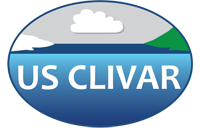Visible and invisible aerosol-polluted cloud tracks as opportunistic experiments of aerosol-cloud interactions
Velle
Toll
University of Tartu
Poster
Ship tracks have long been used to study aerosol impacts on clouds, and more recently, we have extended the analysis of aerosol-polluted cloud tracks to the volcano and industry tracks (e.g. Toll et al. 2019 https://doi.org/10.1038/s41586-019-1423-9). We are using ship-track-like polluted cloud tracks to constrain liquid water path and cloud fraction responses to aerosols. Moreover, we have discovered that industrial aerosol sources like metallurgical industries and power plants can emit both cloud condensation nuclei (CCN) and ice nucleating particles (INPs). Both CCN and INP perturbations can induce visible polluted cloud tracks that can be identified by the naked eye. However, visible perturbations occur only part of the time and sampling invisible tracks (Manshausen et al. 2022 https://doi.org/10.1038/s41586-022-05122-0) could potentially enable insights into aerosol impacts on cloud regimes like deep convective clouds, where visible polluted cloud tracks are not identifiable.

Toll-Velle-poster.pdf
(2.57 MB)
Meeting homepage
